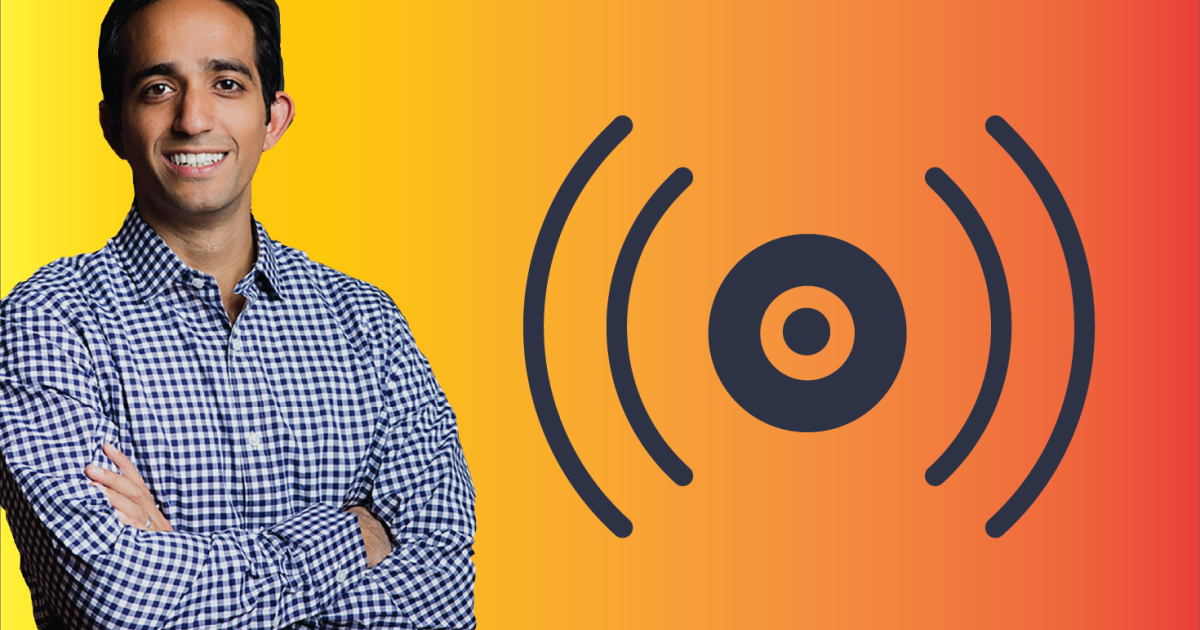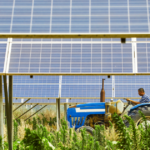Manik Suri is founder and CEO of technology company Therma. Before founding Therma, Manik co-founded the Governance Lab (GovLab), an innovation center at New York University that developed technology solutions to improve government. He is a former affiliate of Harvard’s Berkman Center for Internet & Society and has held positions at global investment firm D.E. Shaw & Company and the White House National Economic Council.
Based in San Francisco, Therma is a leading innovator of IoT-based temperature monitoring solutions designed to create significant reductions in food waste and energy costs. Founded by alums from Harvard, Columbia and UC Santa Barbara, the company is led by a mission-driven team of food industry professionals and technology innovators focused on one thing: making an impact on climate change.
A leader in growing the “smart cold chain,” Therma develops innovative, IoT-powered, 24/7 temperature monitoring and real-time data analytics devices and platforms deployed across thousands of restaurants, retailers, manufacturers and government agencies worldwide, with leading brands including McDonald’s, Starbucks, Burger King, NOW Foods, 7-Eleven and Wyndham Hotels.
Impact Report Series Producer Katie Ellman speaks with Suri about his career journey and how it brought him to capitalizing on the IoT to improve refrigeration for the food industry.
Ellman: In your own words, could you describe to me what Therma is and what you do?
Suri: We build smart, cold chain technologies to overhaul the refrigeration supply chain, trying to create cleaner and more sustainable cooling in ways that advance human health, while protecting the planet itself. We use a combination of technologies: IoT sensors, data analytics and web and mobile tools to help reduce waste of product, energy and refrigerants across the cold chain.
Those three — products, energy, and refrigerants — have a business ROI, and they’re also big drivers of global warming. In total they represent around 7 percent of all warming, which is a big number. And the refrigeration supply chain is growing at 15 percent because so much of the world that’s developing wants refrigerated products, fruits and vegetables, proteins, drugs, vaccines. And so, refrigeration is growing massively. It’s already a big source of emissions and has many failure points. We’re trying to help reduce that waste in ways that allow these important goods to get to humans, while also protecting the planet.
Ellman: Can you talk through the tech that you provide and how it works?
Suri: We think of Therma as an acronym that we came up with after the fact, it’s: temperature; humidity; energy; remote monitoring application. That’s Therma. We use IoT (Internet of Things) sensors that connect real time data from inside a fridge or freezer, a walk-in, or a display case to get the real-time temperature and humidity collected and reported. That’s the fundamental. Wireless, low cost, reliable sensors that can get the signal out of the inside of refrigeration interiors.
That sounds fairly straightforward, but it’s actually pretty novel. The reason being that wireless technologies weren’t able to get signals out of the inside of the fridge or freezer until very recently. WiFi and Bluetooth and generation one wireless connectivity layers couldn’t get a signal out of the iron or steel siding of a fridge or a freezer, which is why almost none of the companies we work with had wireless monitoring. We work with companies like McDonald’s, Pizza Hut, Taco Bell, Domino’s, 7/11, NOW Foods, Marriott Hotels, Wyndham Motels. These are not small companies and they definitely looked at technology for years.
Therma is a hardware enabled data platform that uses low cost, reliable sensors to monitor and alert and help drive efficiencies and avoid spoilage events. And we’re working towards additional functionality on top of that, but that’s kind of where the platform is today.
Ellman: What is your professional background and what led you to Therma?
Suri: I never imagined I’d be working in smart cold chain when I got started. My life and my “unfolding,” as my dad likes to say, is life is a bit like a winding road where you don’t really know where the twists and turns are taking you, but when you look back, it all makes sense in the rearview mirror.
The reason Aaron and I started working in tech in the first place was we wanted to build tech for good, tech that would have a positive social impact.
I came from finance, law and government. Aaron and I started working together on a precursor to Therma, a company called Co-Inspect, Collaborative Inspect, which was our first product. We started working on compliance and health and safety in 2015. Around that time, Chipotle had that series of food safety issues, and that really rocked the food safety world and many, many consumer brands in late 2015, early 2016. So we ended up in the food industry scaling Co-Inspect, got it to scale and in multiple parts of the food supply chain as a way to replace pen and paper with mobile tools.
After getting into a little bit of scale, we had around 5,000 locations using Co-Inspect. We were watching our users using our mobile app in year three, and we noticed that one of the things they were focused on checking was the temperature of the product. And we were trying to figure out ways to improve that product and help the customer help the user out. And I was talking with one of my colleagues in the field, our head of engineering and now CTO, Andrew Hager. He looked at me at one point as we were watching users using this mobile app, and he said, “Look I don’t think a mobile app is the right way to solve this. It’s definitely better than paper, but people still have to check this stuff multiple times a day. What if we could use a sensor to automate it entirely?” Andrew had a background in IoT and sensors and so he spent a little bit of time researching the latest technology frameworks and really came back and said, “I think we can do it with a new type of sensor called LoRa. I think we can get a signal out.” And so that’s what led us to start working on a temperature, humidity, energy remote monitoring application, which became Therma.
And so in late 2019 we put the first couple of Therma sensors in the world and now we have around 7,000, two years later. We’re trying to get to 100,000, a couple of years from now. There’s 90 million refrigeration units in the business world, most of which are unmonitored so 7,000 is not even the beginning to scratch the surface, but it’s been really exciting to bring together a team and my own background in compliance and safety and marry that with our commitment to impact. The reason Aaron and I started working in tech in the first place was we wanted to build tech for good, tech that would have a positive social impact. And now we’ve moved from compliance and safety into climate and sustainability. And we really were pulled into that by the urgency of the times and the urgency of customers’ needs.
Ellman: You spoke about your 7,000 units, and the goal to scale to 100,000 in two more years. How do smaller businesses fit into this?
Suri: We have two ways that we bring our product into the world in terms of growth and sales. We have a direct sales effort, where we have a team that actually identifies potential partners and gets to know them. Whether that’s through conferences, teleconferences or demos, they cultivate relationships and get people to test out the software and hardware.
So we have many, many folks that have a couple of locations, a food truck, a bowling alley, one cafeteria, a grocery store, a local bodega, a seafood shop, all kinds of businesses. Pet stores, funeral homes, just a whole range of businesses. Folks are finding us online through advertising or through content, going to our website and purchasing sensors very affordably. Our model is really transparent, really simple. It’s $10 a month per sensor. There’s no hardware costs so it’s just a monitoring fee. And there’s an annual pricing which is discounted. If you have multiple locations, there’s a discounter on volume. So it’s really meant to be very lightweight, very affordable. You can purchase as many sensors as you have pieces of refrigeration in your location. And that’s allowed us to get in front of a lot of small businesses, recently.
The above Q&A is an edited excerpt from the Bard MBA’s Dec. 17 The Impact Report podcast. The Impact Report brings together students and faculty in Bard’s MBA in Sustainability program with leaders in business, sustainability and social entrepreneurship. Listen to the full episode.
Credit: Source link



